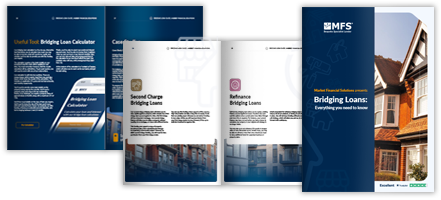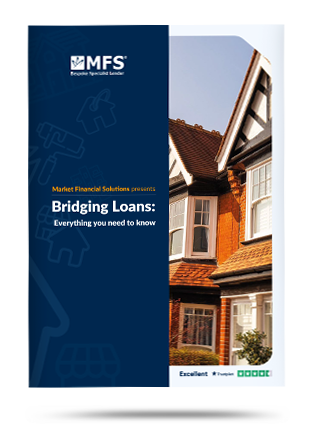Disclaimer
MFS are a bridging loan and buy-to-let mortgage provider, not financial advisors. Therefore, Investors are encouraged to seek professional advice.
The information in this content is correct at time of writing.

When we consider the property market’s current fortunes since the start of pandemic, it’s difficult to overstate it’s success on a large scale. While a large portion of sectors have been forced to cut back, the property market has in fact excelled.
- Property house value (average across the UK) reached £266,000
- This is a 13.2% in the year leading up to June 2021.
Source: Office of National Statistics
The figures speak for themselves. Nationwide have revealed that in the year to June 2021 the rate of growth in average house prices was 13.4% – the highest seen since 2004. Interestingly, the transactional activity was able to match the competitive level. Back in Q4 2020, a total of 350,000 residential exchanges completed, becoming the most in any quarter for six years.
Sources: The Guardian – UK Government
In fact, many of the UK’s more prominent house price indexes all reflect the same information, that the property industry has benefited from the pandemic. This also resulted in a positive effect in the alternative finance industry and demand for bridging loans surged.
Initial reaction
Upon the announcement of the initial UK lockdown, the world – including property purchasing and construction – came to a stop. The housing market faced new crises. Social distancing restrictions limited the capacity for agents to present properties – rendering in-person viewings essentially illegal for the second quarter of last year. While many industries were able to seamlessly adapt to a remote-first working model, virtual viewings naturally did not take off in the same way.
In turn, the social and economic disruption caused the banks to withdraw several basic mortgage products, including the vast majority of standard 10% mortgages. This gave access to a much wider – and much in need –audience for bridging finance to help.
A much larger public audience, stimulated into activity by the loosening of restrictions and the hugely significant Stamp Duty Land Tax (SDLT) holiday, now had both access and drive to invest in property, with motivation to complete quickly and capitalise on immediate cost-savings.

The surge of bridging finance
Time pressure therefore became a critical factor for homebuyers and property investors looking to take advantage of the stamp duty holiday. With a flooded market, mortgage delays overcome high street and traditional lenders, guaranteeing buyers would miss the stamp duty deadline. This became a pivot moment for the alternative finance industry, resulting that the demand for bridging loans surged.
A study conducted by Trussle found that during 2020, the time elapsed between application and approval for a mortgage nearly trebled; from eight to 22 days. With so many people looking to complete quickly to take advantage of the stamp duty holiday without risk of property chains breaks or mortgage delays – fast finance was in high demand.
Source: Mortgage Strategy
If you’re looking to understand more about bridging finance, check out our ‘what is a bridging loan?’ page.
Why use a bridging loan?
Using a bridging loan could see funds deployed in as few as three days; giving buyers and sellers the control to feel confident in their purchase. Naturally, given the urgency within the market, homebuyers often felt restricted by this lengthy process. There was an increased risk of property chains weakening and collapsing, as so many buyers entered the sellers’ market. A broken chain would leave homebuyers rushing to find alternative finance at the last minute. No wonder the demand for bridging loans surged. Bridging loans can subside this risk. As property investors looked to invest quickly, avoid broken chains and lengthy mortgage approvals became a key priority – particularly if they wanted to purchase properties before the SDLT deadline. Alternative finance such as bridging loans provide a unique flexibility that enables them to overcome otherwise complex scenarios.
If you’re interested in reading more about how bridging finance could help you over complex circumstances, read our latest case studies here.
The Association of Short-Term Lenders (ASTL) released figures highlighting the significant consumer buy-in for alternative finance products. In the third quarter of 2020, there was a 25.7% year-on-year increase in the volume of applications for bridging loans. By Q4 2020, with the time pressure on SDLT relief intensifying, there was an even greater surge in applications; an increase of 39.1% on the year prior.
Source: ASTL
Moving forward
In spite of the challenges posed by the pandemic, we’re looking towards the future with healthy optimism. The sustainable growth in the alternative finance sector has allowed us to expand our company, with more BDMs and underwriters to respond quickly to influx in enquiries. So much so that our staff actually increased by 50% since the start of 2021.
To help meet our clients’ needs, three new funding lines have been also secured so far this year. Combined, they reach a value of £400 million. This growth allows us to stay ahead of the curve and support our brokers and direct clients moving forward.
To find out how MFS can support your property investments in the months to comes, get in touch today.
The Complete Guide to
Bridging Loans
Everything you need to know
- Different bridging types
- Useful tools
- Apply them in real life
- Market insights & more











